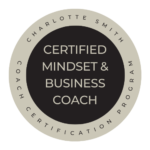


Agribusiness Leadership provides the necessary tools to unveil the fundamental principles of
Empowered Leaders that Trust themselves and the relationships they lead and leaders who are curious to discover who they are and who they lead.

One of the most powerful shifts a leader can make is letting go of the exhausting belief that it’s their job to change other people.
It’s subtle, but it shows up often:
Here’s the truth: you can’t change others. But that doesn’t make you powerless—it makes you more effective. Here’s how I learned that—right in the heart of my own home.
For years, I led my family with an invisible rulebook. Expectations around chores, behavior, tone of voice—all of it. I believed it was my job to enforce those rules to create the right kind of family environment.
But something shifted as my kids got older. The more I tried to control every detail, the more resistance I felt. And honestly? I felt exhausted.
That’s when I came across something simple but powerful: The “Let Them” theory by Mel Robbins.
At first, it felt completely counterintuitive. Let them leave the dishes in the sink? Let them roll their eyes when I ask for something? I didn’t want to “let” anything that went against my values or expectations.
But the more I practiced it—just small moments, little nudges—the more I noticed something unexpected:
I was showing my kids how to lead themselves, not just telling them how to behave.
Instead of reacting, I paused.
Instead of repeating myself, I modeled.
Instead of controlling, I guided.
This didn’t mean I stopped teaching or having standards. But it meant I let the results belong to them. And I stopped tying my worth—or theirs—to whether or not they followed my rules perfectly.
That shift didn’t just change my parenting—it deepened how I lead adults, too.
The Let Them theory is liberating. If someone resists feedback… let them. If they show up late… let them. If they react poorly… let them.
This doesn’t mean you’re passive or permissive. It means you choose presence over control.
And one of the most important tools in this process is simple but powerful: the walk away.
Sometimes, letting them means removing yourself—just for a moment—to regulate your own energy. To breathe. To collect your thoughts before responding.
That walk away is not weakness. It’s wisdom.
It’s the difference between reacting from ego and responding from clarity.
When you let them be who they are, you stop managing other people’s emotions—and start managing your own leadership identity.
What you believe about your team shapes how you treat them. If you see them as lazy or difficult, you’ll lead with judgment. But if you view them with curiosity and empowerment, you create space for growth.
Ask:
Leaders who believe in their people—even when they’re not “performing”—cultivate trust that transforms culture.
You are the tone-setter. The anchor. The culture carrier.
So ask yourself:
You can’t control your team, but you can define who you are as a leader.
When you do that consistently, people respond—even if not immediately.
This work isn’t about giving up—it’s about growing up in your leadership. It’s about modeling over managing. It’s about letting go of what you can’t control so you can focus on what you can.
This week, try this:
That’s what real leadership looks like.
This is exactly the kind of inner work I guide my clients through. If you’re ready to shift from reactive to empowered leadership, let’s talk.
The Let Them Theory – Mel Robins
Simple Leadership – Arlen Motz Leadership